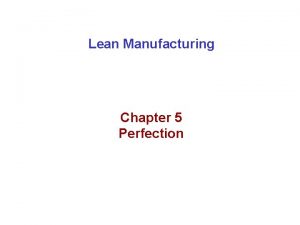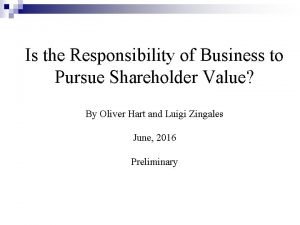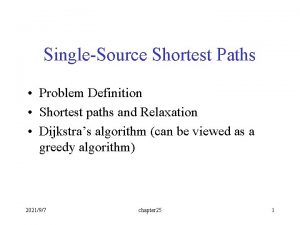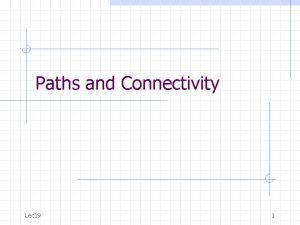Some Paths to and not to Pursue to










- Slides: 10

Some Paths to (and not to) Pursue to Reduce Childhood Obesity in Oregon Craig Gundersen University of Illinois Soybean Industry Endowed Professor of Agricultural Strategy, Department of Agricultural and Consumer Economics



Food Insecurity Rates

Key Objectives • Reduce childhood obesity • Ensure that interventions do not cause harm over other dimensions

Soda Taxes • Do they lead to reductions in soda consumption? • Yes • standard economic theory • Will they generate increased revenues for Oregon? • Yes • standard economic theory • Do they lead to improvements in health? • No evidence in support of this • Do they lead to reductions in obesity • No • e. g. , Fletcher et al. , 2010; Fletcher et al. , 2014 • Will they lead to increases in food insecurity? • Yes • e. g. , Gregory et al. , 2013; Courtemanche et al. , 2015

Supplemental Nutrition Assistance Program (SNAP) • Primary goal is to alleviate hunger • Benefit levels • function of income and family size • maximum benefit level is $649 for a family of four • average benefit level is about $300 for a family of four • Size of program • serves almost 45 million persons • total cost is about $80 billion per year • Eligibility criteria • gross income test • income less than 185% of the poverty line in Oregon – $3, 738 for a family of four • net income test • income less than the poverty line (after deductions) - $2, 021 for a family of four • asset test • not binding in Oregon

SNAP and Obesity • Majority of evidence is that, in comparison to SNAP eligible children, SNAP recipients are either • no more likely to be obese • less likely to be obese • for review, see Gundersen, 2015 • Recent evidence shows that higher SNAP benefits are associated with lower probabilities of obesity • Almada and Tchernis, 2015

Restrictions on SNAP Purchases • Will this lead to increases in obesity among children? • Maybe • Will this lead to increases in food insecurity? • Yes • Declines in SNAP participation • Stigma • Transactions costs • for review, see Gundersen, 2015 • Increases in food prices

Better Approaches to SNAP and Obesity • Resist block granting • Would sharply restrict SNAP’s ability to work as a safety net • Encourage increased participation rates • Albeit, already high in Oregon • Recognize benefits over multiple dimensions • Support even higher benefit levels • Recognize benefits over multiple dimensions
 Why is not advisable to pursue too many strategies at once
Why is not advisable to pursue too many strategies at once Persuade pursue
Persuade pursue Networks and graphs: circuits, paths, and graph structures
Networks and graphs: circuits, paths, and graph structures Euler circuit
Euler circuit Uncontrolled, lacking in restraint
Uncontrolled, lacking in restraint What are some contact forces and some noncontact forces?
What are some contact forces and some noncontact forces? Some may trust in horses
Some may trust in horses Pursue perfection lean
Pursue perfection lean Amway y el medio ambiente
Amway y el medio ambiente Pursue responsibility
Pursue responsibility Shortest paths and transitive closure in data structure
Shortest paths and transitive closure in data structure



















